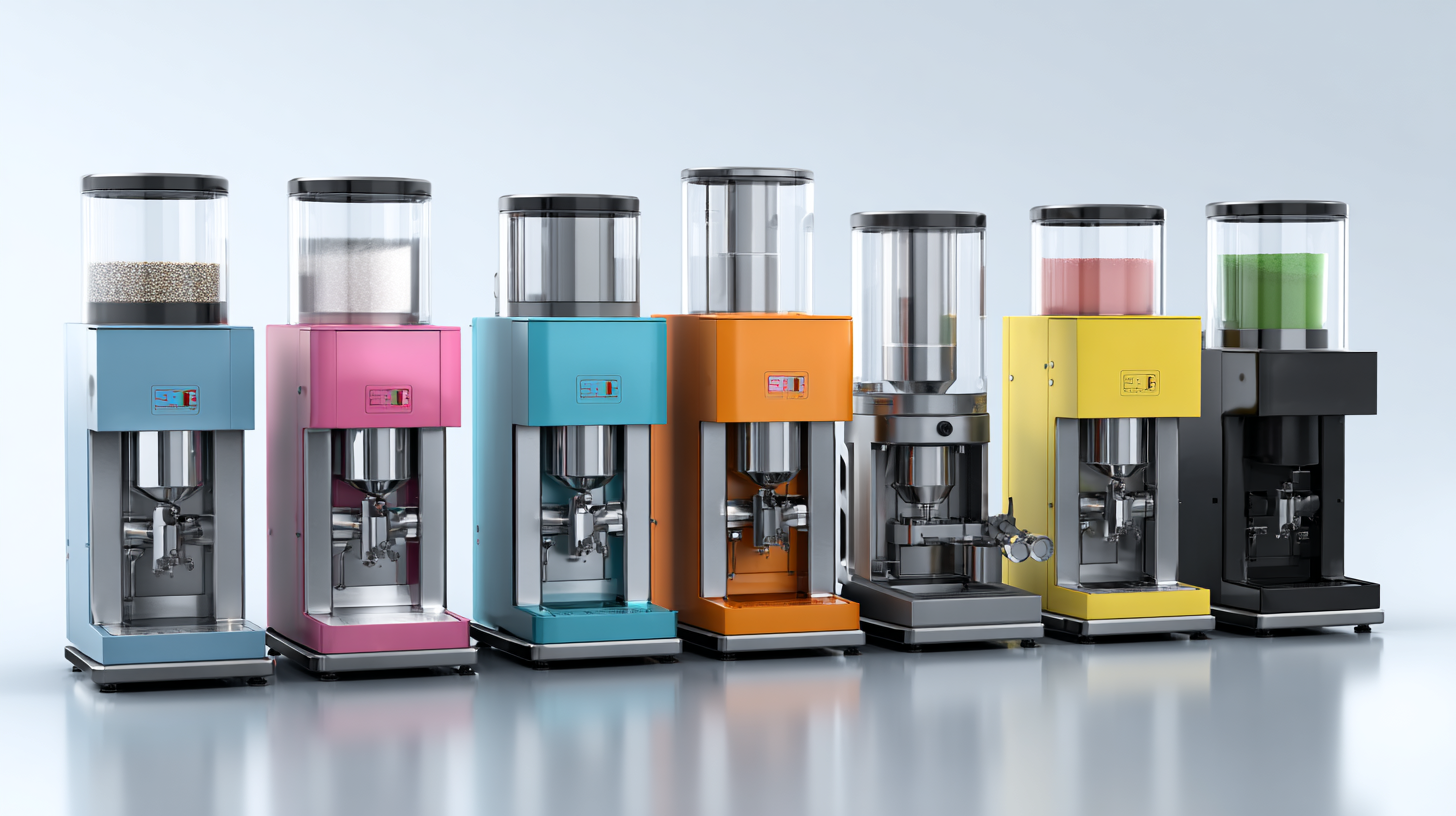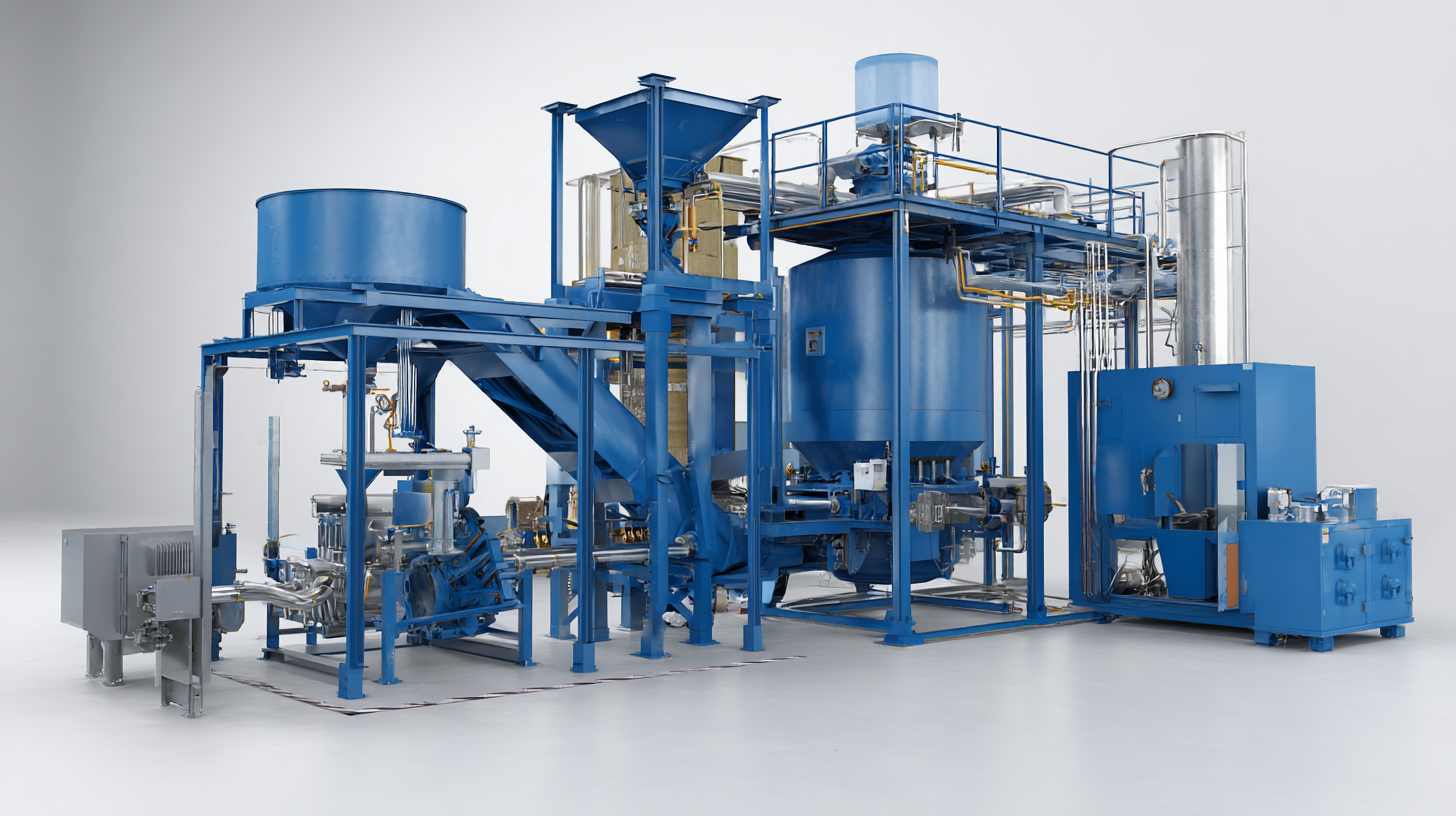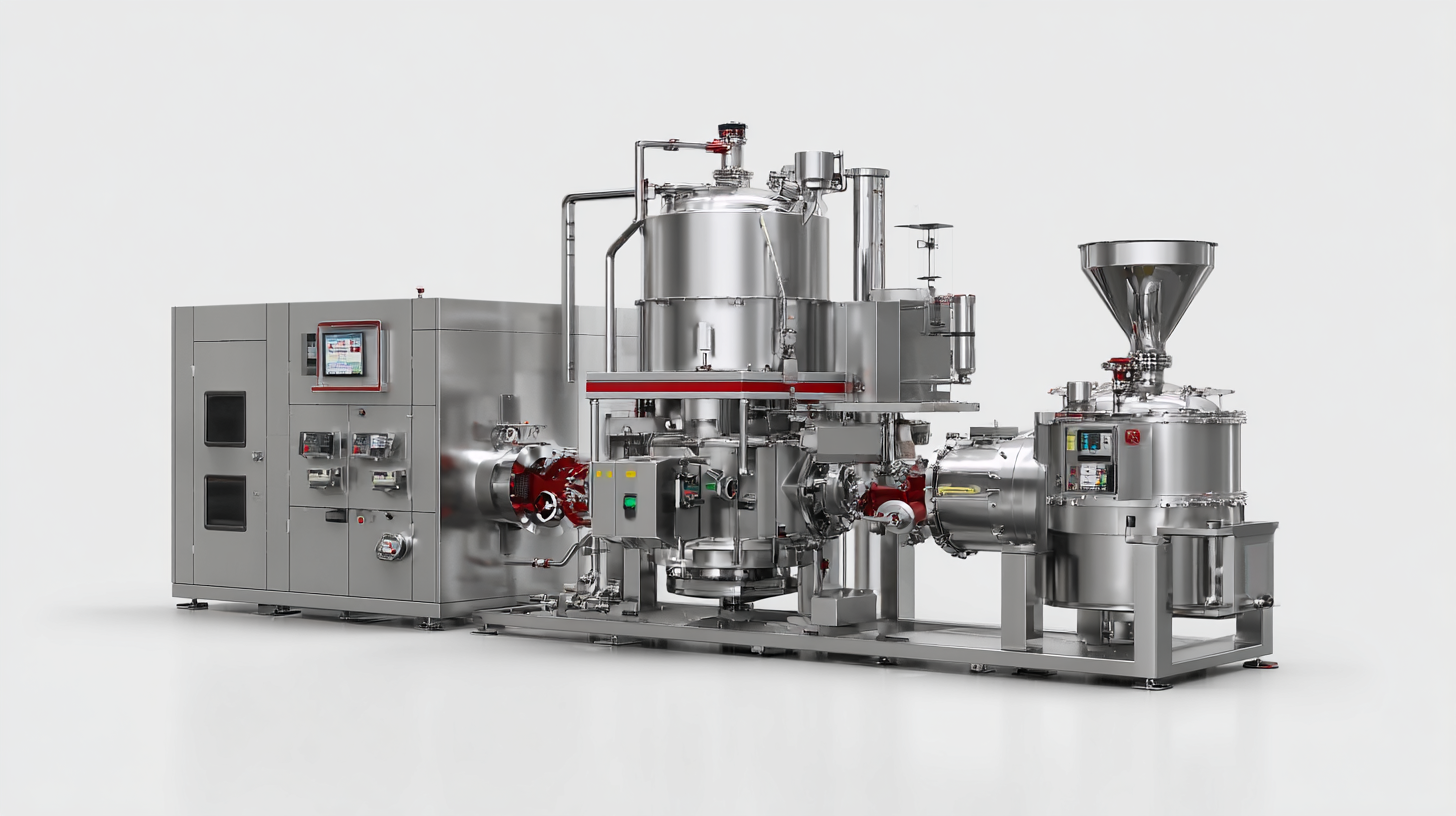
Blog
Ultimate Guide to Selecting the Best Powder Mixture Machine for Your Needs
In today's competitive manufacturing landscape, the significance of selecting the right Powder Mixture Machine cannot be overstated. With the global powder processing market projected to reach USD 12 billion by 2026, driven by advancements in technology and increasing demand from various industries such as food, pharmaceuticals, and chemicals, manufacturers must invest in high-quality machinery to enhance efficiency and product quality. China's reputation as a formidable leader in manufacturing excellence is bolstered by its prowess in exporting state-of-the-art Powder Mixture Machines that meet international standards. According to industry reports, machines manufactured in China not only feature innovative designs but also offer cost-effective solutions, resulting in an impressive export growth rate of over 15% annually. This ultimate guide will provide valuable insights into selecting the best Powder Mixture Machine tailored to your specific needs, ensuring that you stay ahead in a rapidly evolving market.

Key Features to Consider When Choosing a Powder Mixture Machine
When selecting the best powder mixture machine for your needs, focusing on key features can significantly enhance your decision-making process. One crucial aspect to consider is the machine's mixing capacity. Different applications require varying batch sizes, so it's essential to choose a machine that accommodates your specific volume requirements. A larger capacity may be advantageous for high-output production, while a compact model might be more suitable for smaller operations or laboratory settings.
Another vital feature is the mixing technology employed by the machine. Common options include paddle mixers, ribbon mixers, and cone blenders, each offering distinct advantages depending on the material characteristics and desired homogeneity. Understanding the properties of the powders you intend to mix—such as their density, flow characteristics, and moisture content—will aid in selecting the most effective mixing technology. Additionally, consider the ease of cleaning and maintenance, as these factors contribute to operational efficiency and minimize downtime. By prioritizing these features, you can ensure that your chosen powder mixture machine fully meets your production needs and enhances your mixing processes.
Ultimate Guide to Selecting the Best Powder Mixture Machine for Your Needs
| Feature | Importance | Considerations | Example Values |
|---|---|---|---|
| Mixing Capacity | High | Choose based on your production volume. | 50 kg to 500 kg per batch |
| Mixing Speed | Medium | Fast mixing saves time but may affect quality. | 5 to 30 minutes per batch |
| Energy Efficiency | High | Look for machines with lower power consumption. | 1-5 kW |
| Machine Size | Medium | Ensure it fits in your workspace. | 1m x 1m to 3m x 3m |
| Durability | High | Choose materials that withstand wear and tear. | Stainless steel vs. carbon steel |
| Ease of Cleaning | Medium | Simple disassembly leads to better maintenance. | Quick release features |
| Control System | High | Digital controls provide better accuracy. | Touchscreen interface |
| Warranty and Support | Medium | Check if service is available in your area. | 1 to 5 years warranty |
Types of Powder Mixture Machines and Their Unique Applications
When it comes to powder mixture machines, understanding the various types and their unique applications is essential for selecting the right equipment for your specific needs. One common type is the ribbon blender, which efficiently blends powders of various densities and is widely used in food, pharmaceutical, and chemical industries. Its design allows for effective mixing while minimizing product waste due to its low profile and easy discharge systems.
Another popular option is the V-blender, renowned for its gentle mixing process that preserves the integrity of delicate powders. This machine is particularly beneficial in industries where the texture and structure of the material are critical, such as cosmetics and specialty chemicals. The unique shape of the V-blender enables the powders to move freely, promoting uniform mixing without causing degradation.
Lastly, there are high-shear mixers designed for applications requiring a finer, more homogeneous blend. These machines are ideal for industries dealing with very fine powders or those that need to incorporate liquids into their dry mixtures, such as in the production of pharmaceuticals and nutraceuticals. Each machine type serves distinct purposes, highlighting the importance of choosing the right one based on your specific material properties and processing requirements.
Comparative Analysis of Batch vs. Continuous Powder Mixers
When it comes to selecting the right powder mixture machine, understanding the fundamental differences between batch and continuous mixers is crucial for optimizing production efficiency. According to a recent report by MarketsandMarkets, the global powder coating market is expected to grow to USD 16.67 billion by 2026, highlighting the increasing demand for efficient mixing technologies in various industries.
 Batch mixers are known for their versatility and ability to handle a wide range of formulations, making them ideal for companies with diverse product lines. They allow for precise control over mixing times and parameters, ensuring consistent quality in small to medium-sized production runs.
Batch mixers are known for their versatility and ability to handle a wide range of formulations, making them ideal for companies with diverse product lines. They allow for precise control over mixing times and parameters, ensuring consistent quality in small to medium-sized production runs.
On the other hand, continuous mixers offer higher throughput and are designed for large-scale production. The same MarketsandMarkets report indicates that continuous processes can save up to 15% in operational costs compared to batch processes. This is particularly advantageous for manufacturers looking to minimize downtime and maximize output. Continuous mixers maintain a steady flow of materials, which can lead to better homogeneity in the final product.
Thus, companies must carefully evaluate their production needs and budget constraints to choose between batch and continuous mixers, ensuring they select a machine that aligns with their long-term operational goals.
Common Industries Utilizing Powder Mixture Machines and Their Needs
Powder mixture machines are essential in a variety of industries, each with its own unique requirements. In the pharmaceutical sector, for instance, precise blending of active ingredients is crucial. The machines must ensure uniformity and consistency to comply with strict regulations and to guarantee the efficacy of medications. Furthermore, these machines often need to operate under stringent hygiene standards to prevent contamination, making features like easy cleaning and maintenance vital.
In the food industry, powder mixture machines are equally important but serve different needs. They are utilized to blend spices, baking ingredients, and nutritional powders. The focus here is on the ability to handle various textures and moisture levels while maintaining flavor integrity and quality. Manufacturers require machines that can efficiently produce large volumes without compromising on the quality of the final product. This versatility in function showcases just how integral powder mixture machines are across diverse sectors, adapting to meet specific industry demands.
Maintenance Tips to Enhance the Longevity of Your Powder Mixing Equipment
When investing in a powder mixture machine, it’s essential to not only focus on selection but also on maintenance to ensure longevity and optimal performance. According to a recent report by the American Society of Mechanical Engineers, regular maintenance can extend the life of industrial equipment by as much as 30%. To achieve this, it’s crucial to establish a routine maintenance schedule that includes thorough inspections, cleaning, and lubrication.

One effective maintenance tip is to regularly check and replace worn parts, as almost 25% of machinery failures can be attributed to overlooked component wear. Additionally, ensuring proper calibration can significantly impact mixing efficiency, with studies showing that even a 1% variance in mixture composition can result in a reduction of quality by up to 15%. Utilizing high-quality materials and adhering to manufacturer guidelines for maintenance can further enhance the performance and durability of your powder mixing equipment, ultimately leading to increased productivity and cost savings in the long run.



